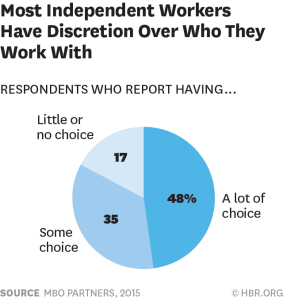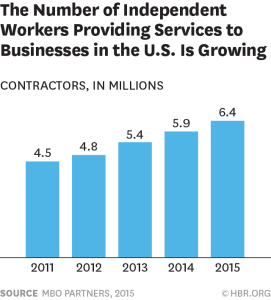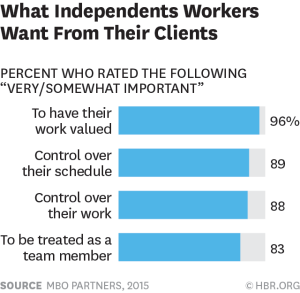Tag archives for: Hiring

In recent years, employees of architecture firms have increasingly attempted to join unions. This trend is driven mainly by the need for workers to protect and secure their rights as professionals. Unions provide a platform for employees to come together and negotiate fairer wages, better working conditions, and greater job security. Members can also access additional benefits such as legal advice, collective bargaining, and representation. Joining a union gives workers in the architecture field more control over their professional lives and helps to ensure that they are treated fairly and equitably by employers. As architectural firms continue to grow, the rights of employees must be protected and respected. Unions play an essential role in providing this protection, giving individuals the peace of mind that their rights and interests are protected.
By joining a union, architecture firm employees can help improve the industry. By negotiating better wages and working conditions, they can ensure that every professional in the field is treated fairly and compensated equitably for their work. The collective strength of union members also allows them to speak out against any injustices or exploitative practices they may experience, ensuring that their voices are heard and respected. With more people joining unions, the architecture industry is becoming safer and fairer for everyone involved.
Overall, union membership offers a range of benefits for employees in the architecture field. It gives them a platform to fight for their rights, negotiate better wages and working conditions, and ensure their voices are heard. By joining a union, they can help create a fairer and more equitable industry for everyone involved. As the architecture field continues to evolve, unions will remain essential to ensuring that workers’ rights are respected. But is it fools gold?
As architecture firm owners consider the implications of unionization, they must weigh the risks and rewards. Unionized firms face higher costs for labor, resulting in increased overhead that diminishes their competitive edge. Furthermore, collective bargaining agreements can restrict a firm’s ability to manage staffing levels and set salaries according to market conditions. Not being nimble can limit a firm’s ability to adapt quickly to changes in the industry, as well as its ability to attract and retain talented employees. Ultimately, these factors make unionization a less attractive option for many architecture firm owners. However, it is important to note that unions can bring tangible benefits, such as job security and improved wages and working conditions, which could appeal to some. Ultimately, it is up to individual owners to decide if unionization is the right choice for their businesses.
Architects are held to a high standard due to the critical nature of their work. They must possess excellent technical knowledge and communicate effectively with clients, designers, and contractors. As a result, they often require specialized training or certification to practice as professional architects. Despite this need for advanced skills and rigorous qualifications, architects are usually not eligible for collective bargaining, as many operate independently or in small firms and do not form unions. Thus, architects must advocate for their interests regarding workplace issues such as wages and working conditions. Architects must be aware of their rights and understand the profession’s regulations to ensure they receive fair compensation and working conditions. By doing so, architects can ensure they can continue practicing their craft in a healthy and productive environment.
Although architects traditionally do not form unions, they should still be aware of their rights and participate in the industry conversation around workplace issues. By doing so, architects can ensure they are compensated fairly and work in environments that promote their skillset and creativity. Architects must understand how their profession can benefit from unionization to better advocate for their interests.
It isn’t easy to find accurate statistics on how many architecture firms are unionized, as most are privately owned. However, there have been reports that suggest that under 3% of all architecture firms in the world and one firm in the United States may be part of a union or labor association.
Although becoming part of a union offers specific employee benefits, such as increased bargaining power and better wages, it can also be limiting in terms of flexibility. By joining a union, an architectural firm is subject to “just cause” guidelines regarding hiring and firing. Just cause means that there must be documented evidence that an employee is not meeting the standards of their position or has committed a punishable offense before they can be terminated. Therefore, it is complicated for an architectural firm to manage its workload most efficiently, as there may not be the flexibility to let go of employees quickly during times of low demand. Additionally, unions can restrict how many subcontractors or temporary workers an architecture firm can hire at any given time, limiting their ability to adapt to changing needs. Including dictating the workflow in contrast to increasing/decreasing staffing levels as needed. In addition, unions are not typically supportive of “at will” employment, which provides much more flexibility when hiring and firing.
Overall, unions can provide many benefits to architectural firms but also have certain restrictions that must be weighed carefully. Architecture firms must consider all their options before deciding on joining or not joining a union. Ultimately, the best solution will depend on each firm’s specific needs and goals.
For architecture firms that decide to join a union, there are measures they can take to ensure the best outcomes for their business. For example, firms should make sure they familiarize themselves with the rules and regulations of the union and negotiate any hiring or firing restrictions to ensure maximum flexibility when managing staff levels. Additionally, it is vital to understand the union’s grievance process and how disputes will be handled. Finally, firms should also consider creating a separate contract with the union that outlines their expectations for staffing levels and hiring and firing procedures.
By taking these measures, architectural firms can ensure that joining a union does not limit their ability to perform their work efficiently and effectively.
This information is for educational purposes and does not constitute financial, legal, or other professional advice. Please consult with a qualified professional if you require assistance.
Additional resources:
– New York Times: https://www.nytimes.com/2021/12/21/business/architects-white-collar-union.html
– The Real Deal: https://therealdeal.com/2022/09/01/new-york-firm-establishes-architectures-first-union/
– Architects’ Journal: https://www.architectsjournal.co.uk/news/do-architects-need-a-trade-union
– National Labor Relations Board (NLRB): https://www.nlrb.gov/
– American Institute of Architects (AIA): https://info.aia.org/join-aia/collective-bargaining-labor
– National Association of Architects (NAA): http://www.naahq.org/
– American Federation of Architects and Engineers: https://afae.org/
– Society of Professional & Executive Employers (SPEE): http://speeusa.org/
– U.S. Department of Labor: https://www.dol.gov/general/topic/labor-relations/labor-unions
– American Bar Association: https://www.americanbar.org/groups/labor_law/publications/aba_books/unionbargaining.html
– Harvard Law School: https://www.law.harvard.edu/news/labour/collective-bargaining-and-labor-unions/
– Cornell Law School: https://www.law.cornell.edu/wex/labor_union
– Bureau of Labor Statistics (BLS): https://www.bls.gov/opub/ted/2011/ted_20110429_data.htm
– Governing: https://www.governing.com/topics/workforce/unionizing-workers-collective-bargaining-rights.html
– National Labor Relations Board (NLRB): https://www.nlrb.gov/what-we-do/protecting-employee
Architecture Practice
|
architects, architecture, atwill, collectivebarganing, Consulting For Architects, David McFadden, design, firing, Hiring, jobs, Jobsecurity, justcause, salary, Trade, Unions, wages, workingconditions
|

Flex-core staffing is an excellent way for architecture firms to break the hiring-firing cycle, increase their firm’s bottom line, and keep their employees happy. By hiring temp architects to fill in the peaks and valleys that always occur, firms can keep their core staff intact and avoid the need to engage and fire employees constantly. This practice can save firms both time and money, and it can also help them maintain a higher level of quality control.
Few things are more costly to a business than the hiring and firing cycle. Not only does it take a toll on your human resources department, but it can also significantly impact your bottom line.
Fortunately, there are ways to break the cycle and improve your financial situation. You can improve your bottom line and increase profits by taking some simple steps.
1. Review your hiring practices. Poor hiring practices are the most common causes of the hiring and firing cycle. If you’re constantly hiring and then firing employees, it’s time to take a closer look at your process. Are you screening applicants properly? Are you asking the right questions?
2. Train your managers. Another common cause of the hiring and firing cycle is poor management. If your managers constantly have to deal with employee issues, it’s time to give them some training. Teach them how to manage their teams and handle conflict appropriately.
3. Communicate with your employees. One of the best ways to avoid the hiring and firing cycle is to communicate with your employees. Let them know what your expectations are, and give them regular feedback. This will help them understand what they need to do to meet your standards.
4. Be consistent with your policies. You must comply with your policies to avoid the hiring and firing cycle. Make sure that everyone in your company knows your procedures and that they are followed. This will help to create a sense of stability and reduce the need for turnover.
5. Offer incentives. Another great way to avoid the hiring and firing cycle is to offer incentives for good performance. If you have employees who consistently meet or exceed your expectations, offer them a bonus or other incentive. This will show them you’re serious about their work and appreciate their efforts.
These simple steps can break the hiring and firing cycle and improve your bottom line. Implement these tips in your business today and see the difference it makes.
There are many ways to increase an architecture firm’s bottom line. One way is to increase the number of projects that the firm takes on. Another way is to increase the fees that the firm charges. Still, another method is to cut costs.
One way to increase an architecture firm’s bottom line is to increase the number of projects that the firm takes on. This can be done by marketing the firm more aggressively or by expanding the geographic areas that the firm serves.
Another way to increase an architecture firm’s bottom line is to increase the fees that the firm charges. This can be done by expanding the firm’s service rates or adding new services that command higher fees.
Still another way to increase an architecture firm’s bottom line is to cut costs. This can be done by streamlining the firm’s operations, eliminating unnecessary expenses, or finding ways to save on materials and labor.
Increasing an architecture firm’s bottom line can have many benefits. It can improve the firm’s financial health, allow the firm to hire more staff, and enable the firm to expand its services. Taking steps to increase an architecture firm’s bottom line can help the firm become more prosperous.
ABOUT THE AUTHOR
After working at various design practices on a full-time and freelance basis and starting his design firm, David McFadden saw a gap to fill in the industry. In 1984, he created an expansive hub for architects and hiring firms to sync up, complete projects, and mutually benefit. That hub was Consulting For Architects Inc., which enabled architects to find meaningful design work while freeing hiring firms from tedious hiring-firing cycles. This departure from the traditional, more rigid style of employer-employee relations was just what the industry needed – flexibility and adaption to current work circumstances. David has successfully advised his clients and staff through the trials and tribulations of four recessions – the early ’80s, the early ’90s, the early 2000s, the Great Recession of 2007, and the Pandemic.
Hiring trends
|
architects, architecture, business, Consulting For Architects, design, employees, firing, firms, flex, Hiring, human, Interviewing, jobs, Labor Market, manage, porfolio, resources, resume, screening, staffing
|

In our third installment of Archinect’s Guide to Job Titles series, we attempt to tackle the nuanced role of the Studio Director without falling back on search engines like Google and Bing or job boards like Glassdoor, Indeed, Monster, or Ladders [not in original article]. As with most positions within architecture firms, the lines are quite blurry when it comes to the role of Studio Director. For some, this leadership position acts as a kind of operations specialist and strategist while also functioning as a firmwide design leader. For others, the Studio Director might function as a buffer between design teams and the higher-level leadership of an organization. And for others still, this individual might run their studio as a kind of “mini-firm” within a larger firm, responsible for their own business development, hiring, project management, and overall growth. The intricacies and variations associated with such a dynamic posting can’t be explained exhaustively, there will always be some deviation. Nevertheless, what follows is our attempt to capture the inherent essence of this career path in architecture.
Structural Relevance
Architecture firms come in many forms. Depending on size, the internal structure of the personnel will differ. Some firms might operate in a departmental structure, where each team works on a specific phase of a project: a design “department” might work on the programming and schematic phases before passing the work on to a technical department that would realize the construction documentation. Others might have various project teams, each with its own project managers who are overseen by a Studio Director or Principal(s). And others still might divide into multiple studios, each with a specific function, and led by their own Studio Director, respectively. In this structure, each Studio Director would report to a Managing Principal, Design Principal, or both. Some Studio Directors may even be partners of the firm or Principals themselves. When it comes to the possible organizational structures of design firms, the variations are many.
While the interpretation of the role will differ from office to office, a Studio Director will typically oversee a studio. This may be a single studio under one roof, with a small or medium-sized staff, separated into smaller teams, each with a project architect/project manager, a job captain, and designers. Each team leader could report to a Studio Director who then might report to or collaborate with a higher-level leadership team, such as a firm’s Principal(s).
A studio could also be one of many within a larger firm, each with an expertise focus such as hospitality, healthcare, sports, workplace, restoration, or interiors. Each Studio Director would have specialized knowledge and experience in their area of expertise. In this model, studios might operate under the umbrella of a larger firm but would function as its own “sub-firm,” having its own clients, staff, and sometimes even its own receptionist. These “studio structures” can vary widely, and the nuances will depend on the organization in question.
A Studio Director Needs to be a People Person
In Archinect’s Growing Leadership and Practice: Laney LA’s Search for a Studio Director, we dove deep into conversation with Anthony Laney of Laney LA about his search for a Studio Director. “On day one, five project managers, each with their own team of one to two aspiring architects, will report to the Studio Director,” Laney told Archinect. “So, in total, the Studio Director will be leading a team of about 14 people. Right now, I’m giving about 30 percent of my time to a Studio Director role. We want to tear the lid off of that and allow someone to give it 100 percent of their time.” Here we have the leader of a relatively medium-sized firm in need of a Studio Director to act as a point person between him and his project managers. Laney saw this as someone who was not only in love with design, but who also had a deep passion for creating and building a great team.
People skills are 80 percent of the job, probably more…
Archinect also spoke with Lindsay Green, Principal and Studio Director at OFFICEUNTITLED, and Shawn Gehle, Principal and Co-Founder. On the topic of managing a team and dealing with different kinds of people, the pair elaborated further. “People skills are 80 percent of the job, probably more,” they said. “You have to deal with multiple personalities every day. Happy people; sad people; staff; clients; personal issues amongst the team.” They went on to articulate the expansive role a Studio Director might have within an office. In addition to effectively managing people, a leader in this role might also take on responsibilities of reviewing the office’s backlog and ensuring future staffing needs are fulfilled, overall professional development and client management, internal development of team members, human resources, and finance. “We really rely on Lindsay to run this office, we look to her to understand our overall health and outlook,” Gehle said of Green. “She acts as a kind of Chief Operations Officer, shepherding the resources within the office.”
A Strong Business Acumen
Green’s role goes far beyond that of the traditional project manager or project architect, but rises further into rigorous strategic planning and execution, calling for business acumen and facility not typical in architects. “I think if someone is considering this role as something to work towards in their career, they should consider getting an MBA. Understanding business is crucial in this position,” Green elaborated. “And even after that, it’ll take on-the-job experience to establish an understanding of how firms operate.”
Where before one’s core preoccupation might have been client satisfaction, design quality, timely deliverables, and internal team health, the focus now expands to a broader higher level concentration dealing with the business, strategic, and developmental aspects of the organization as a whole. Yes, project teams are concerned with these aspects, but on a fundamentally different level. They have a responsibility for their projects, whereas a Studio Director’s daily duties directly deal with the trajectory and direction of the bigger picture, moving beyond a partial focus to a comprehensive one.
What are firms looking for?
So what are firms looking for in a Studio Director? Take Gensler, a corporation based around a “collaborative studio leadership model.” Each studio has a specialty and is led by a highly experienced Studio Director, who oversees everything from overall management of the team and projects to the finances and budget. They work closely with staff in both professional development and mentorship as well as hiring in collaboration with HR. Studio Directors at Gensler are responsible for marketing, developing new business, and responding to RFPs, along with several other high-level responsibilities. According to Gensler, those pursuing this role should have a minimum of 15 years of experience and have a proven record in their area of focus. Moreover, Studio Directors at Gensler should possess a comprehensive personal portfolio of work, illustrating their aptitude and understanding of their expertise. Essentially, Studio Directors are leaders of their own small firm within the larger organization that is Gensler.
A Multi-Disciplined Leader
In the end, Studio Directors are multi-disciplined leaders with a depth of experience that allows them to lead a team of professionals of varying experience levels. They operate on multiple fronts, some of which include business functions such as staff development, hiring, strategic planning, finances, as well as traditional functions like QAQC, guiding design quality, and managing clients and projects. The possibilities appear broad and wide-ranging, but we’ve learned that business acumen is crucial, people skills are essential, and a deep understanding of the traditional functions of the architect, indispensable.
Author – Sean Joyner is an architect-trained writer and editor at Archinect. His articles and essays utilize themes in history, philosophy, and psychology to explore lessons for students and professionals within the fields of architecture and design. Sean’s work prior to Archinect focused primarily on k-12 and higher education projects in Southern California. Some of the things Sean enjoys are playing and practicing chess, studying obscure topics like quantum physics and cryptography, working out, and reading compelling books.
Sean Joyner’s Blog on Archinect
Archinect
Consulting For Architects, Inc. Staffing and Recruiting Hiring Trends Blog
Articles:
Salary and responsibilities for design directors for interior design
Harvard GSD announces winners of 2020 Richard Rogers Fellowship
Job Titles
|
Archinect, architecture, architecture jobs, Careers, Consulting For Architects, design, Gensler, Hiring, hiring an architect, hiring firms, ilookup, jobs, mentoring, studio, studio director, teaching, titles
|

Hiring Millennials
Baby boomers are retiring in record numbers, and their millennial replacements are very different in terms of personal characteristics, as well as job and workplace expectations. Millennials, aged 18 to 34 years old, already makeup more than one-third of the workforce. By 2025, they will account for close to 75 percent. Architecture firms are now in an intense competition to attract and retain qualified millennial professionals. Understanding the millennial perspective and developing a suitable workplace environment are imperatives for business sustainability.
Characteristics of Millennials
Millennials are one of the most analyzed generations because of their complexity. They are the first generation of digital natives, and technology has enormously influenced their expectations. For example, they are driven by a need for social connectedness and have integrated technology deeply into their personal lives. As such, they now expect the same in their work lives. CISCO calls it the “new workplace currency,” since 56 percent of college students surveyed said they would not accept a position at a company that banned access to social media.
Millennials have high expectations. They want higher pay based on skills sets and faster promotions. They believe the firm should provide appropriate leadership development and have values that match their own. If the business fails to meet these expectations, the employee will leave. Millennials are not interested in plugging along doing eight hours of mundane routine work they see as having little social impact. They want to do meaningful work that is clearly connected to solving complex societal problems.
Millennials are optimistic about the future and are a diverse generation, with over 44 percent identifying with an ethnic group or a minority race, according to theU.S. Census Bureau. They are content creators, thriving on collaboration. They also want work-life balance, which for the millennial may mean using remote-work technology. A 2015 CISCO survey found that over half of Gen Y (millennials) and Gen X (generation sandwiched between baby boomers and millennials) consider themselves accessible for work 24/7.
Perhaps the most important characteristic to understand is that millennials want to work for companies that reflect their personal values. A Deloitte survey found that 56 percent of millennials had ruled out working for an employer because their values were in conflict. This is perhaps one of the most difficult concepts for traditional organizations to master.
Why are You Leaving?
Understanding the top reasons millennials change jobs provides a knowledgeable foundation for developing recruiting and retention strategies. Consulting for Architects, Inc. (CFA) conducted a survey which asked architecture and design firms to rank, in descending order of importance, the reasons employees aged 18 to 35 years old left their firms. The results are revealing and support much of the academic and business research and studies conducted over the years to identify millennial characteristics.
Ranking number one in the CFA survey as the top reason for millennial turnover is concern about the lack of opportunities for career advancement. Number two is a desire for more challenging work. Number three is dissatisfaction with the leadership of senior management. Number four is disagreement with the overall direction of the organization. Number five is dissatisfaction with the compensation and benefits. Number six is unhappiness with the amount and/or type of rewards and level of recognition for contributions to the firm. Number seven is a desire to seek a better work/life balance.
It is not surprising the leadership of senior management ranks high because these are the people most responsible for the firm policies and procedures, business culture, and talent management system. Since many of the senior leaders are baby boomers, there is a generational difference in attitudes towards work, career, and the need for employee recognition. Baby boomer architects and designers spent many years doing low-level assignments, putting in many hours without regard for work/life balance. The rewards were the work itself and steady career advancement, and for some, reaching a point where it was possible to start a new business. Now baby boomers are managing organizations in which millennials already comprise or will soon comprise most of the workforce, and the younger generation wants change.
A good example of the generational difference is found in a blog written by a millennial architect. The title says it all – “Millennial Architect Won’t be Your CAD Monkey.” There have been other surveys conducted, and they support the CFA survey results and the need for senior leaders to adapt the work environment to meet the needs of the millennials. A 2012 survey, for example, found that millennials expected to stay in their jobs for less than five years.
Recruiting Millennials
The strategies for attracting and recruiting millennials specifically address their characteristics and the top reasons they leave architecture firms . First, it is important to develop a workplace culture that nurtures the millennial spirit and makes young architects believe this would be the best place to work. The culture must embrace diversity and cherish the organization’s brand and reputation. For instance, since millennials always check social networks for information, potential employers should take into consideration what current employees, clients and communities are saying about the company. Every architectural firm should regularly monitor and manage the online conversation concerning the organization. The online conversation coupled with the marketing strategies needs to demonstrate the architecture firm’s mission, values, ethics and beliefs, so that recruits will see that their personal values align with the organization’s values.
Technology plays a critical role in other respects. Video interviews can showcase an architecture firm as a progressive and flexible culture, and can often provide distinct advantages to both the firm and the interviewee. For the millennial, video interviews are also more convenient, as they get an opportunity to show their true character instead of only what is on the resume.
For the architecture firm, video interviewing saves time and money because the cost is much less compared to in-person interviews. It makes the hiring process quicker while also giving the interviewer an opportunity to explore facets of the person’s personality traits, something not possible with a written resume. Overall, video interviewing fits a modern workforce expecting efficient use of technology, flexibility and a willingness to collaborate for mutual benefit.
Other recruiting tools include developing a good pay and benefits package, supplemented with the presentation of career path opportunities that demonstrate potential upward mobility. Millennials who see a position as dead-end will either refuse a position or will accept the position only as a stepping stone for obtaining licensing.
Retaining Millennials
Millennials have been described as “children of the revolution.” The “revolution” is a shift in individual perspectives to a focus on the needs of the community. Millennials want to do meaningful work centered on people; therefore, one of the most critical retention strategies is developing work with these attributes. Tasks must allow them opportunities to work on projects that make a social impact, like environmental sustainability renovations, low-income housing solutions and disaster relief architecture.
The type of projects offered will influence the turnover rate. Research indicates that 91 percent of millennials expect to stay in a job for less than three years if the work is not challenging. They are entrepreneurial and will leave a boring job to start a new business in order to meet personal goals.
Architecture firms must rethink everything from work schedules to leadership training. Strategies include allowing flexible work that lets employees work within a loosely structured schedule. The 9-to-5 schedule is out. One of the ways personal and organizational values are integrated is by allowing employees time to take care of personal needs, like family or community projects. Ideally, the flexible schedule is coupled with the right to work remotely. They are as likely to be found reading and responding to work emails at 9 p.m. as they are at 9 a.m.
Professional development is also crucial. In the Deloitte survey mentioned earlier, six out of 10 millennials believe their companies do not fully develop their leadership skills. Yet, this is one of the most prized activities determining business value. Skills development involves a variety of activities, including training software, mentoring and collaborative teamwork. Millennials need and want a lot of support that encourages them to pursue leadership roles on teams, as well as over projects and departments.
Overhauling Business As Usual
Attracting, hiring and retaining millennials requires a complete overhaul of “business as usual.” All aspects of the talent management process should be viewed through the millennial lens with the ultimate goal of building a loyal, innovative workforce. Admittedly, the current disconnect between millennial expectations and the traditional architecture firm’s work structure is wide, so now is the time to begin making required changes. No one ever said it would be easy to move into the future – a future that is here now.

Hiring Millennials
Consulting For Architects, Inc. is gathering editorial information from our architecture and design colleagues between the ages of 18 to 35. Your comments will be considered and may be quoted in our 2016 white paper: Hiring Trends – Millennials in the architecture workplace
Existing research on Millennials, by others claim:
- Seem to have shorter attention spans than Gen X or Boomers
- Tend to learn as much as they can, as quickly as they can, and then move on
- Trending towards smaller firms
- Seek firms compatible with their world view
Do you agree, disagree, or hold a different opinion? Can you identify what factors would influence your job hunting strategy?
We look forward to your comments.
You may also be interested in ranking the top 6 reasons millennials change firms by clicking on our survey.
Thank you for your time.
Hiring Millennials
|
architects, architectural design, architecture, Consulting For Architects, Employment, Hiring, job hunting, job interview, jobs, Millennials, unemployed architects
|

The Growing “Gig Economy”
There has been a lot of debate over the past year about the merits of the gig economy—where people work on a project or contract basis instead of holding down jobs as traditional full-time employees. Presidential candidates have weighed in on the pluses and minuses of “gig” or contingent work. Lawsuits against on-demand work companies like Uber and Handy are widely covered in the press while investors continue to pour billions of dollars into similar startups.
For the most part, these discussions and debates have focused on companies like Uber and Lyft that connect independent contractors with customers to provide consumer services. More often ignored is the growing population of contingent workers, including independent contractors, statement-of-work-based labor, and freelancers who provide services to corporations. But this is a growing population of workers, many of whom are highly skilled.
It takes a careful mix of mission, management, and culture.
Attracting, retaining, and managing these highly skilled workers will require new ways of thinking about talent management and the role that external talent plays. Companies will need to become “the client of choice” for these high-end contractors.
Recent research illustrates the growing corporate use of contingent workers:
Our own research reinforces these findings. The MBO Partners 2015 State of Independence workforce study found that 6.4 million Americans report that they provide professional services to corporations on a contingent or contract basis. Of these, about 2 million report earning $75,000 or more last year.
Not only is this group large—by way of comparison, this is substantially more than the roughly 4 million Americans who work in the automotive industry, including those working in car dealerships and automotive parts retailing—it’s also growing. Our study shows the number of contingent workers providing professional services to corporations has been growing at about three times the rate of overall employment over the past five years.
Two broad shifts—one on the employer side, the other on the worker side—are driving this boom. First, companies increasingly need a flexible workforce to compete globally. In our research we heard from company leaders that their businesses are turning to independent workers to increase business flexibility and agility. Independent workers allow them to quickly and efficiently scale staffing up and down to meet shifts in demand and changing business circumstances in an increasingly volatile and always-changing global economy. Businesses are also turning to highly skilled independent workers due to difficulties in attracting and retaining employees with hard-to-find specialized talents.
Second, many skilled professionals want independence and are going into contingent work to gain greater work/life flexibility, autonomy, and control over their careers. These highly talented professionals are realizing they are able to go off on their own and make as much or even more money — so they’re doing just that.
These professionals are in demand, and they know it. According to our research, 83% say they have a lot of choice or some choice over who they work with. Only 17% report having little or no choice over who they work with. In other words, these talented professionals can choose what to work on and with whom to work.
So what do these highly skilled independent workers want from their clients?
Being paid well and on time is obviously important to independent workers. But less obvious — and generally more important — are the non-monetary reasons independents choose their clients.
Skilled independents want the ability to control their lives, have meaningful work, and to be part of the team. When it comes to deciding which clients to work with, 96% selected “Value my work” as an important client attribute. Right behind was “Allow me control over my schedule” (89%) and “Allow me control over my work” (88%). “Treat me as part of the team” came in fourth. While independents value their autonomy and don’t want to be traditional employees, they also want to be treated as contributing team members.



Co-Authored by:
Steve King is a Partner at Emergent Research, a research and consulting firm focused on small and micro businesses.
Gene Zaino is the founder and CEO of MBO Partners, a provider of support, tools and resources for independent professionals and their clients.
Original Source
Consulting Community
|
architects, business, Consulting, David McFadden, Employment, flex staffing, Flexible Workforce, Freelancers, Gig, Hiring, jobs, Project based
|
















